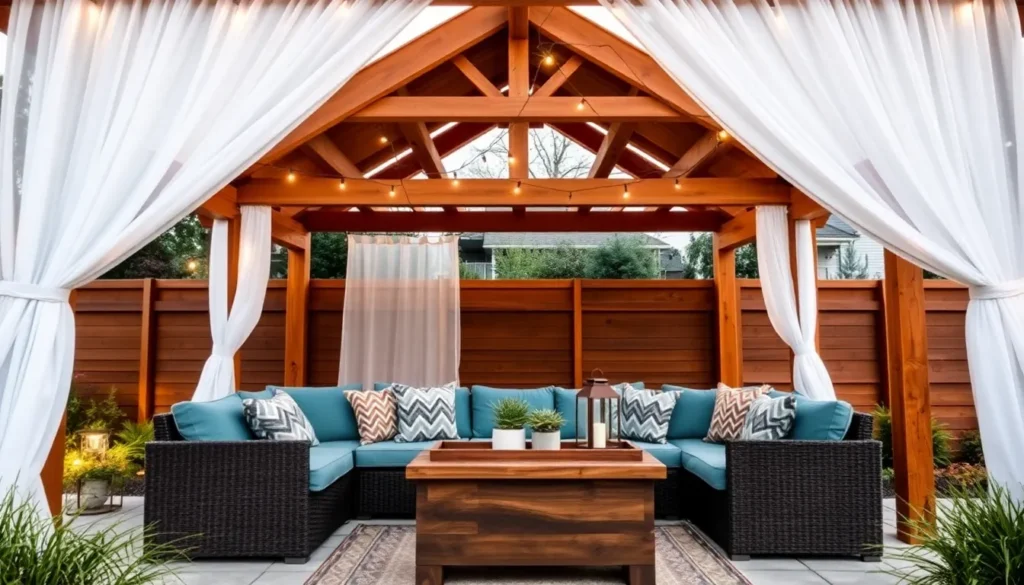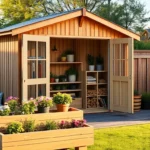Imagine stepping into your backyard and being enveloped by the serene beauty of a pergola, where sunlight filters gently through climbing vines and a gentle breeze stirs your senses. Whether you’re just starting your outdoor journey or you’re a seasoned pro, our guide to “8 Pergola Landscaping Ideas to Surround Your Outdoor Space” is your ticket to transforming your backyard into a personal paradise.
In this guide, you’ll discover valuable insights that will empower you to create an enchanting outdoor haven with ease. From enhancing privacy to adding architectural flair, these pergola ideas promise practical benefits that bring joy and a touch of elegance to any home. Get ready to feel confident and inspired as you embark on crafting the outdoor oasis of your dreams!
Incorporate Climbing Vines for Shade
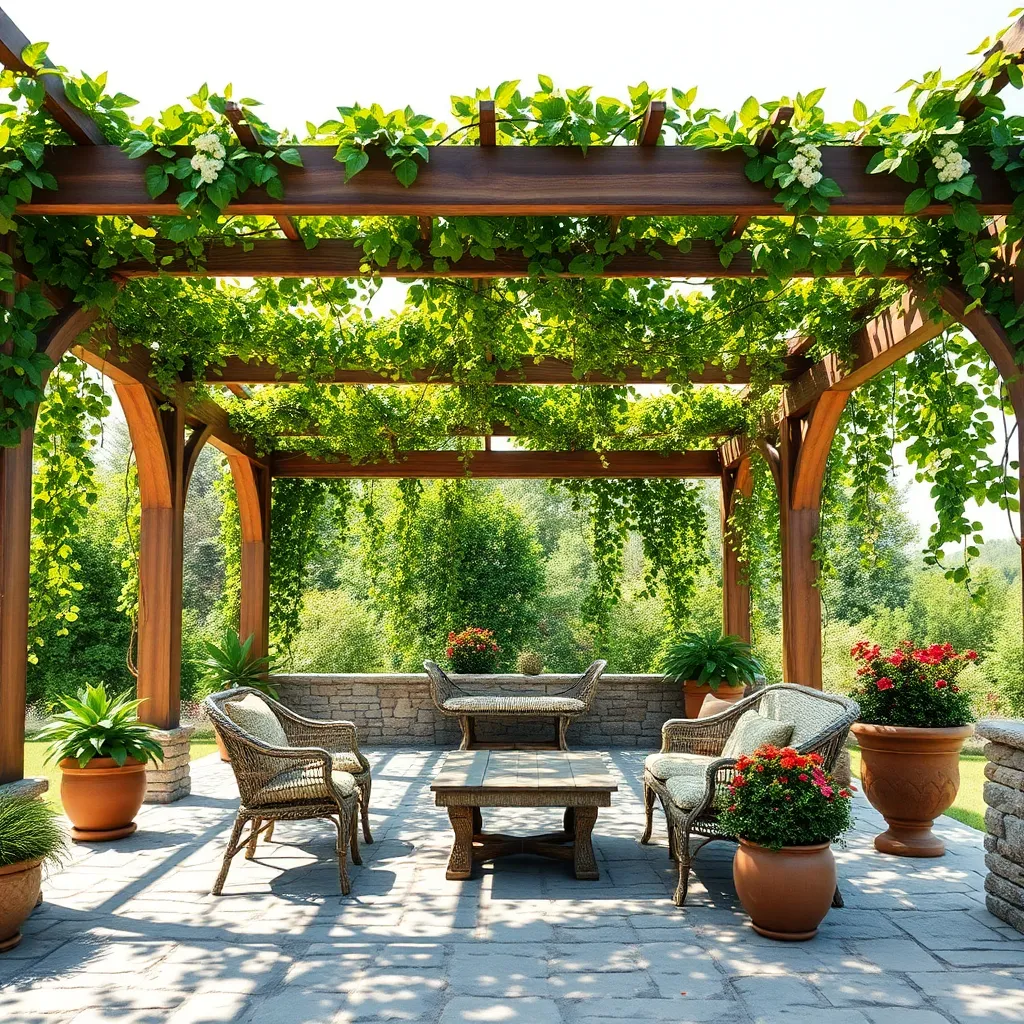
Enhancing your pergola with climbing vines can transform it into a lush, shaded retreat. For beginners, start with hardy and fast-growing options like clematis or honeysuckle, which are easy to maintain and thrive in various climates. Use a sturdy trellis or wire system to guide and support the vines as they climb, ensuring the structure can handle the weight and growth.
For a more advanced touch, consider integrating a mix of evergreen and flowering vines, such as a combination of trumpet vine for vibrant blooms and ivy for year-round foliage. To achieve optimal coverage, plant vines approximately 12-24 inches apart and regularly prune to encourage healthy growth and direct the spread. This thoughtful layering not only provides ample shade but also adds depth and texture to your outdoor space.
Plant Aromatic Herbs Along Pathways
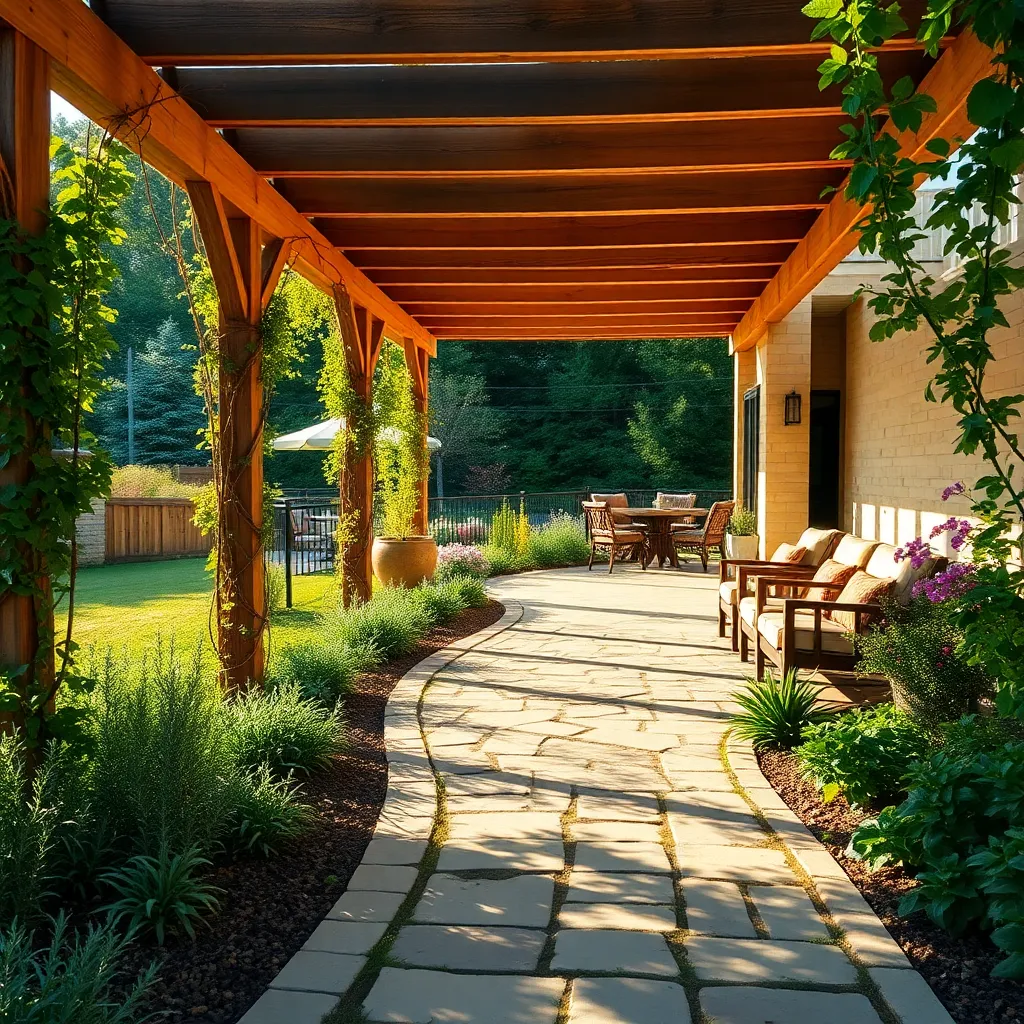
Transform your pergola pathways into a sensory delight by planting aromatic herbs such as lavender, rosemary, and thyme. These herbs not only provide a pleasant fragrance but also serve as natural pest deterrents. For beginners, consider starting with easy-to-grow options like mint and basil, which thrive in various climates and require minimal maintenance. Ensure that the path’s edges are well-defined, using materials like stone or brick, to create a clean, organized look that guides the eye and keeps the herbs contained.
For a more advanced touch, incorporate raised herb beds or containers along the path. This approach offers better drainage and makes it easier to control soil quality, which is essential for healthy herb growth. Opt for materials like cedar or teak for their durability and resistance to decay. To enhance the visual appeal, choose containers in varying heights, creating an inviting, layered effect that draws visitors along the path. Remember to place taller herbs towards the back and shorter ones in front, ensuring all varieties receive ample sunlight and create a harmonious display.
Add Hanging Planters to Beams
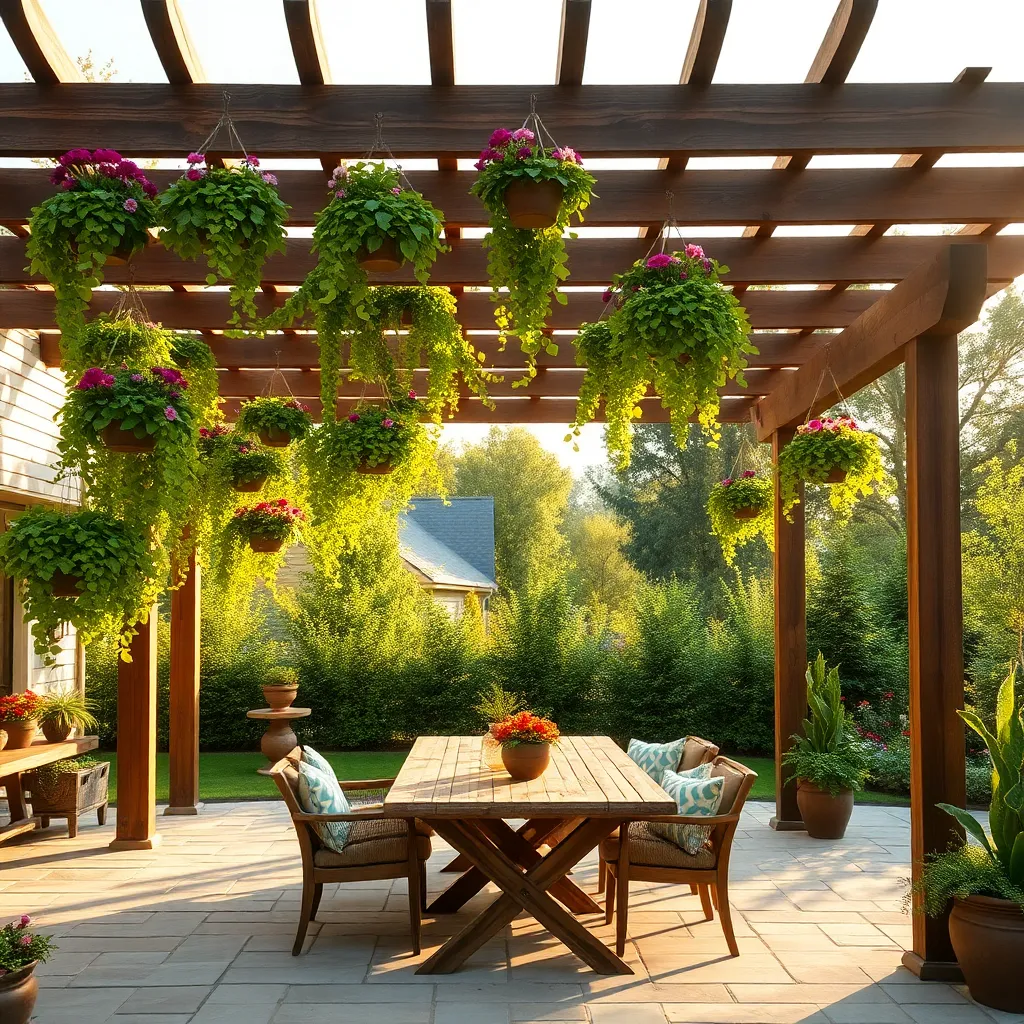
Enhance your pergola’s aesthetic by adding hanging planters to its beams. Start by selecting sturdy, weather-resistant planters made from materials like terracotta, metal, or UV-resistant plastic. Choose a variety of plants that thrive in hanging environments, such as trailing ivy, ferns, or brightly colored petunias, to add vibrancy and texture overhead. Ensure the beams are strong enough to support the weight of planted containers, and use heavy-duty hooks or brackets to securely attach them.
For a more advanced touch, consider integrating a simple drip irrigation system to keep your hanging plants lush and healthy with minimal effort. Measure the distance between beams to evenly space your planters, ensuring a balanced look. Beginners can start with a few planters to gauge the visual impact before expanding. This technique not only provides shade and greenery but also creates a dynamic, engaging environment that invites you and your guests to linger and enjoy the outdoor space.
Create Borders with Ornamental Grasses
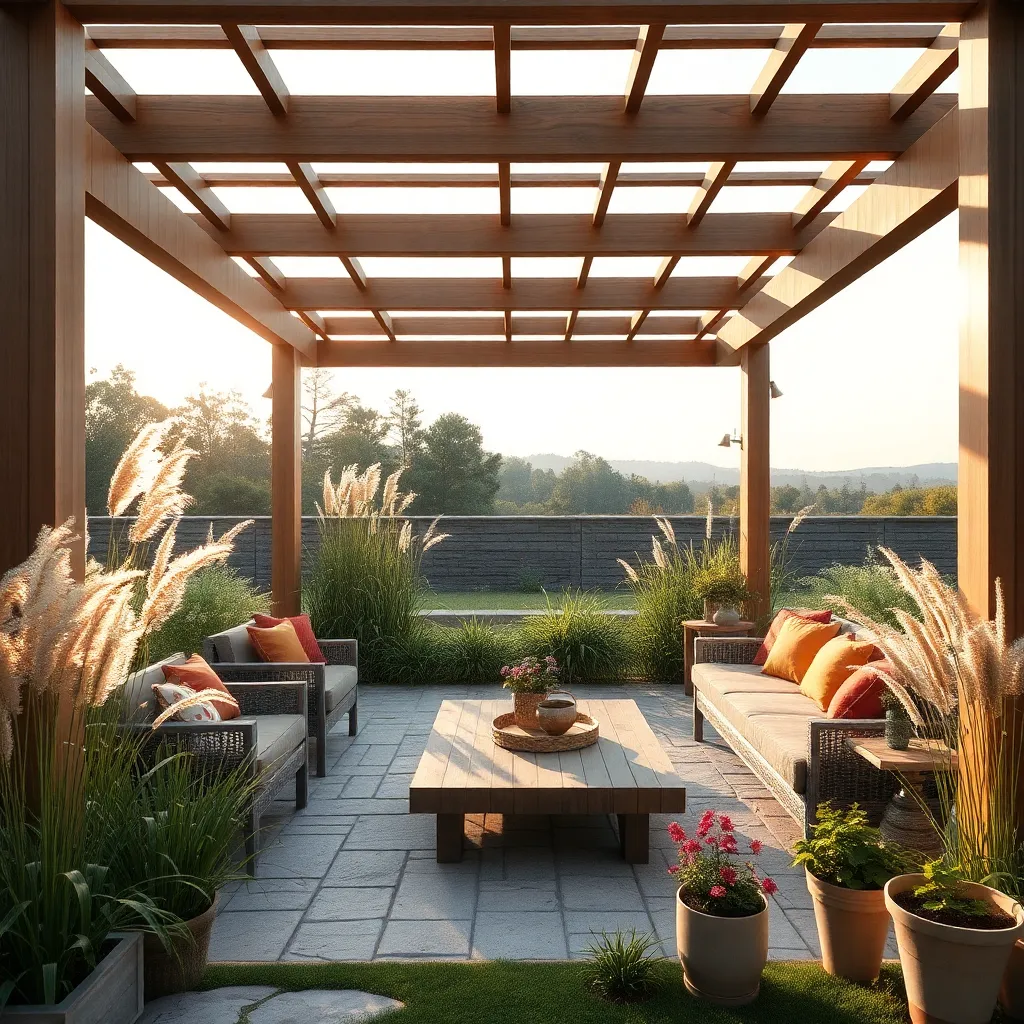
Ornamental grasses are a fantastic way to create natural borders around your pergola, adding texture, movement, and year-round interest. Choose varieties like Miscanthus or Pennisetum which offer varying heights and colors, perfect for framing your structure. When planting, space them about 18-24 inches apart to allow room for growth while maintaining a lush, cohesive look. For beginners, grasses are low-maintenance; they require minimal watering once established and only need pruning back in early spring to encourage new growth.
For those looking to enhance their design, consider layering different species of grasses to add depth and visual intrigue. Use taller varieties at the back and shorter ones in front, creating a tiered effect that draws the eye. Advanced gardeners might integrate companion plants like lavender or sedum to complement the grasses’ hues and textures. Remember to select plants that thrive in your climate zone to ensure your border remains vibrant throughout the seasons. By incorporating these elements, you’ll create a stunning, natural border that beautifully frames your outdoor space.
Use Potted Trees for Height
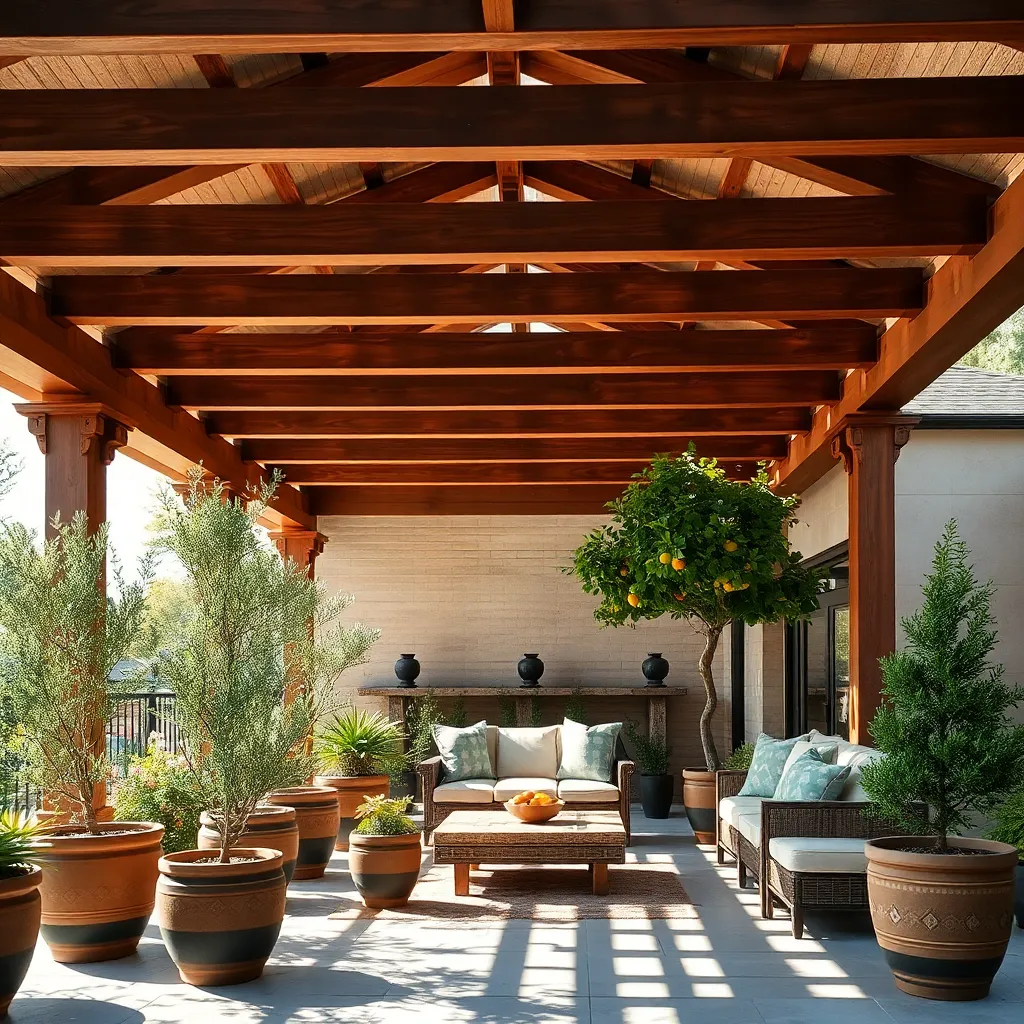
To add vertical interest and a sense of enclosure to your pergola, consider using potted trees. Opt for species that thrive in containers, such as Japanese maples, dwarf citrus, or olive trees. These trees provide height and visual appeal without the need for permanent planting, making them ideal for those who prefer flexibility in their outdoor design. To ensure stability, choose pots that are at least 24 inches in diameter and use a high-quality potting mix to support healthy root growth.
Strategically place your potted trees around the pergola to create natural shade and privacy. For a cohesive look, select pots that complement the color and style of your pergola, such as terracotta for a classic feel or sleek metal for a modern touch. Watering and pruning are crucial to maintaining the shape and health of your trees, especially in container settings. An advanced tip is to incorporate a drip irrigation system for consistent moisture, ensuring your plants thrive with minimal effort.
Install Water Features Nearby
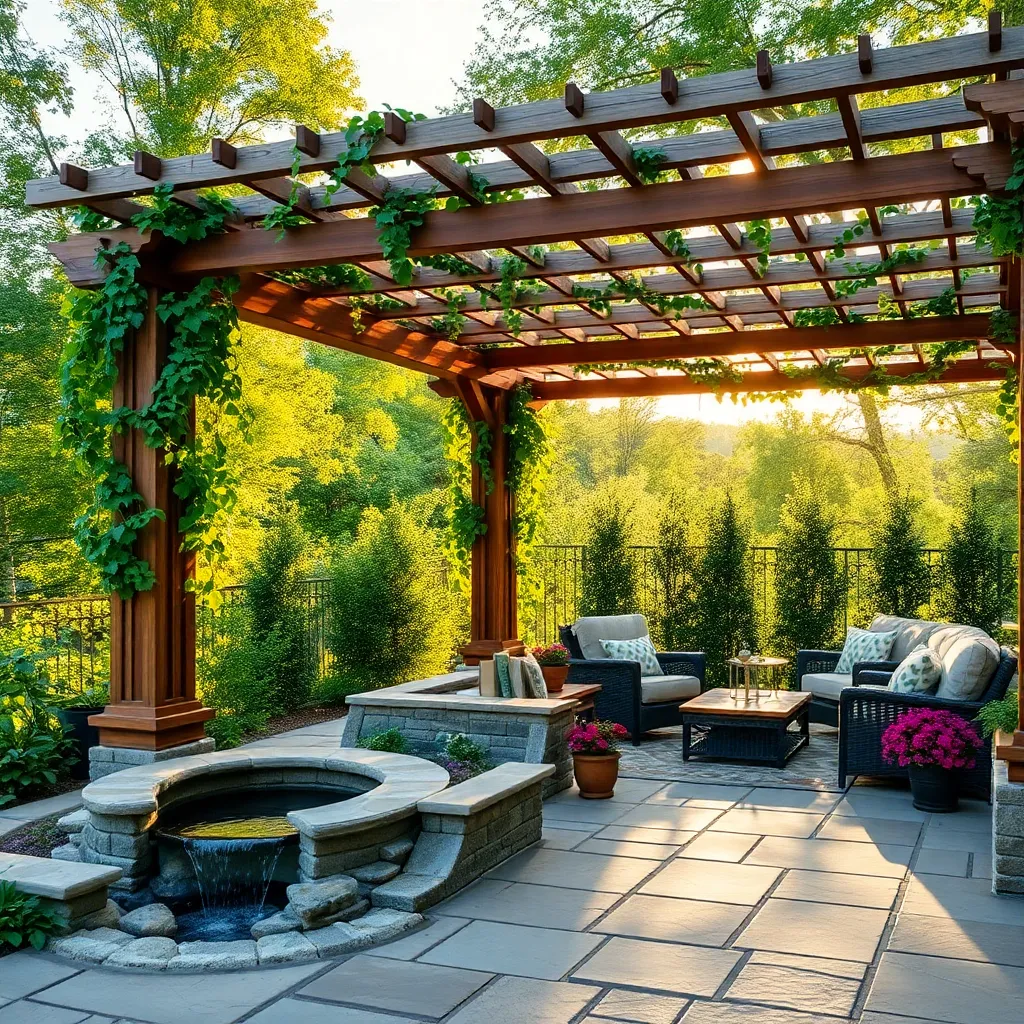
Enhancing your pergola with a water feature can create a serene ambiance, transforming your outdoor space into a tranquil retreat. Consider installing a small pond or a cascading fountain made from natural stone or weather-resistant materials like fiberglass. These features not only add visual interest but also help mask unwanted noise, creating a peaceful environment. Start by choosing a location that allows for easy water access and consider the size of your pergola to ensure the water feature complements rather than overwhelms your space.
For those new to gardening, a self-contained fountain kit is a straightforward option that requires minimal installation. More experienced gardeners might opt for a custom-built pond with aquatic plants like water lilies for added texture and color. Ensure your water feature is positioned to receive enough sunlight while avoiding excessive debris from nearby trees. Tip: Incorporate subtle landscape lighting around the water feature to highlight it at night, creating a stunning focal point even after the sun sets.
Design Surrounding Flower Beds
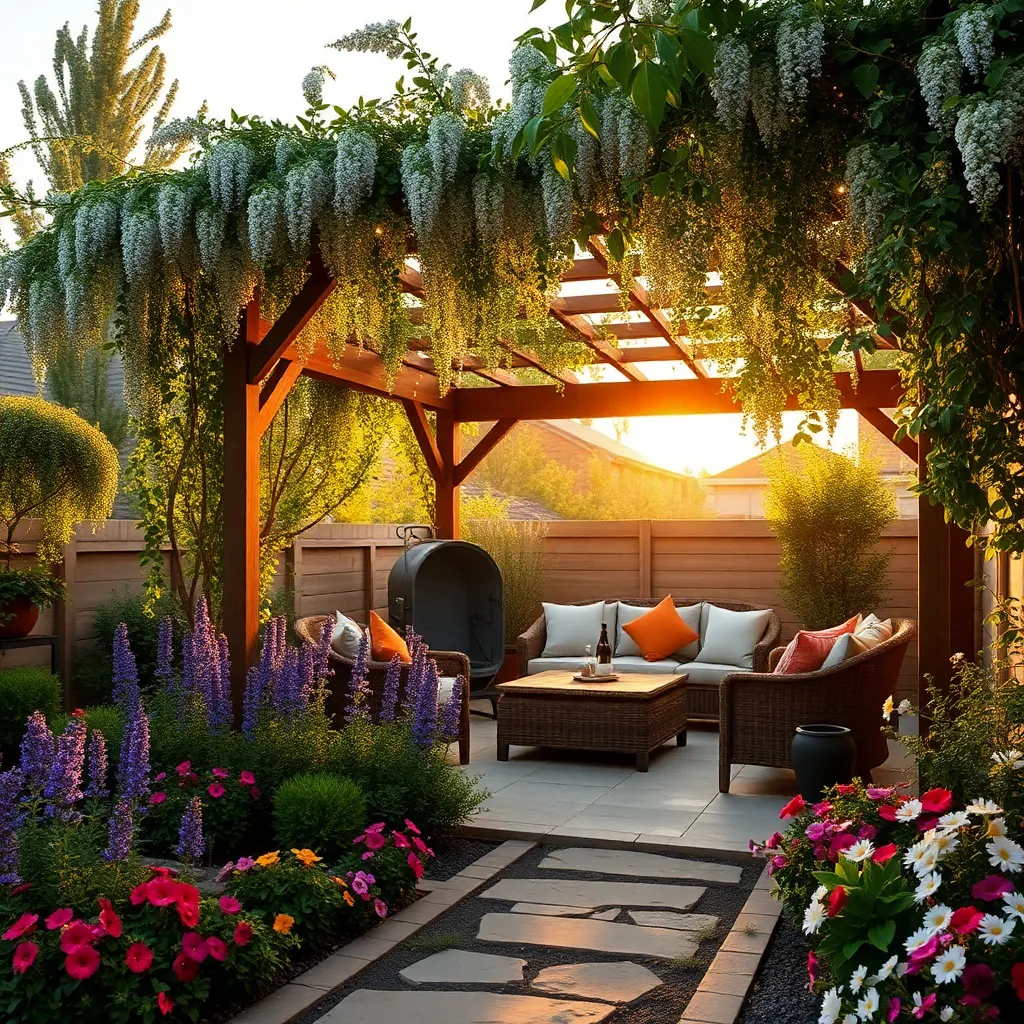
Incorporating flower beds around your pergola enhances its aesthetic appeal and creates a natural blend with the surrounding landscape. Begin by selecting a variety of plants that complement your pergola’s design; for instance, climbing roses or clematis can be trained to entwine around the structure, adding vertical interest. Choose perennial flowers like lavender or daylilies to ensure continuous bloom throughout the growing season, and consider the sun requirements of your chosen plants to ensure they thrive.
When designing your flower beds, consider the use of edging materials such as brick, stone, or metal to define the boundaries and prevent soil erosion. Arrange plants in layers, with taller species at the back and shorter ones in the front, to create a tiered effect that adds depth and dimension. Advanced gardeners can incorporate companion planting techniques, such as pairing marigolds with vegetables, to naturally deter pests and support a healthy garden ecosystem. Remember to leave space for maintenance and growth, ensuring your design remains both beautiful and functional.
Place Benches for Relaxation Spots
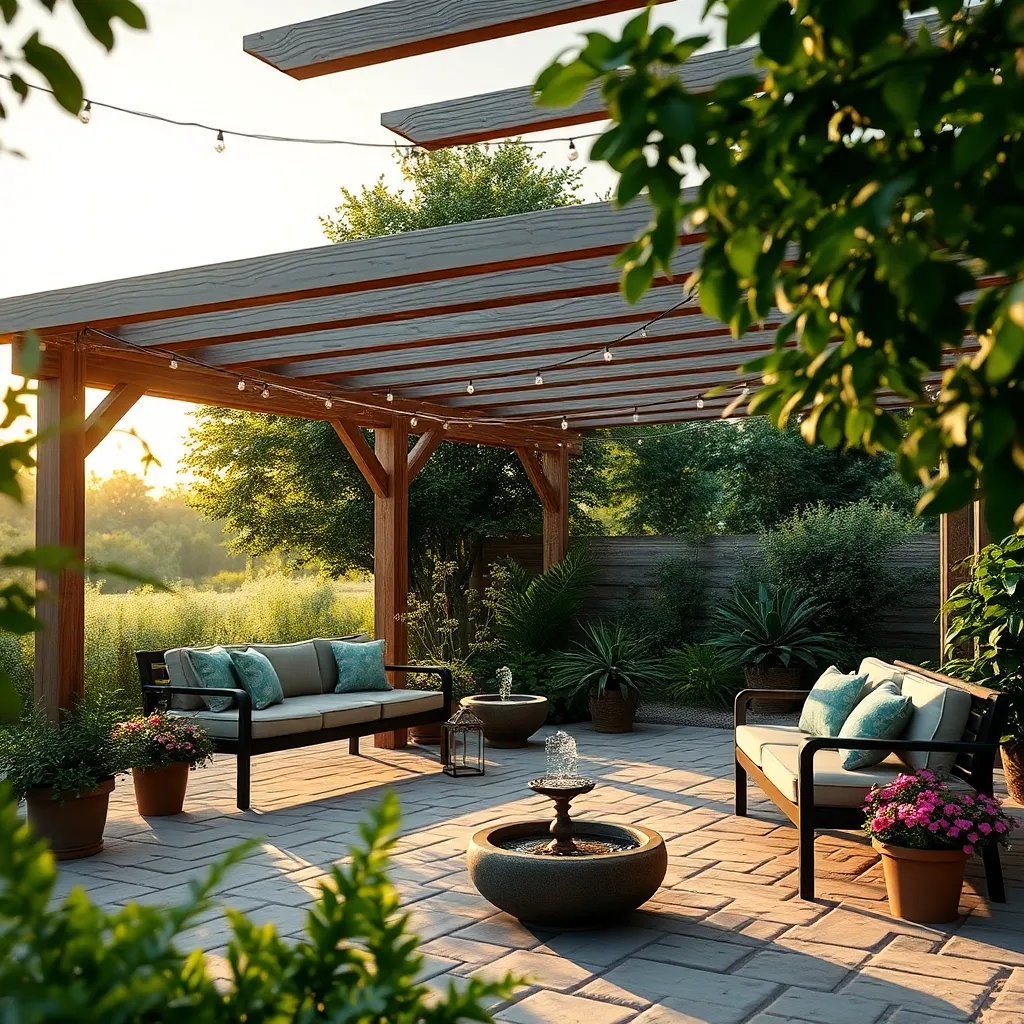
Positioning benches under a pergola can transform your outdoor space into a serene retreat. Begin by selecting weather-resistant materials like teak, cedar, or powder-coated metal to ensure durability and longevity. For optimal comfort and visual appeal, choose benches that fit the scale of your pergola—typically, a bench height of 16-18 inches and a depth of 15-20 inches works well. To create a cohesive look, consider adding cushions or throws in colors that complement the surrounding flora.
Consider placing benches strategically to maximize the enjoyment of your garden views or sun patterns. For instance, positioning a bench along the pergola’s edge can provide a perfect spot for morning coffee as the sun rises. For those with a flair for design, incorporate built-in seating options that can double as storage for outdoor essentials. Enhance these relaxation spots with side tables for convenience, and use potted plants or lanterns to add warmth and ambiance, making your pergola an inviting haven year-round.
Conclusion: Creating Beautiful Outdoor Spaces
In exploring the landscape of love and connection, we’ve delved into eight transformative concepts to fortify your relationship’s outdoor space. From cultivating trust and nurturing communication to fostering shared goals and embracing individuality, each idea serves as a sturdy beam in the pergola of your partnership. We also touched on the importance of managing conflict constructively, maintaining emotional and physical intimacy, and supporting each other’s growth, all while ensuring that mutual respect is the foundation of your union.
Now, take a moment to choose one concept that resonates deeply with your current relationship landscape. Perhaps it’s enhancing communication or supporting personal growth. Commit to incorporating this into your daily interactions, and watch as your partnership flourishes under the gentle shade of your efforts.
For future reference and consistent inspiration, save or bookmark this article. Let it be a guiding light you return to, ensuring that your relationship continues to thrive amidst life’s seasons.
As you embark on this journey of intentional connection, know that the seeds you plant today will blossom into a resilient and rewarding relationship tomorrow. Your path to enduring love and happiness is paved with the thoughtful actions you take now.

